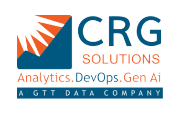Every data enthusiast would have heard about and used Tableau, but for businesses who haven’t still updated to Tableau, here’s why you should consider Tableau for all your data needs.
Tableau is a powerful data visualization tool that allows users to explore, analyse, and present data in a visually interesting way. Knowing the key features of Tableau and effectively using them gives the most benefits of the platform.
Here are the top 10 features of Tableau according to us;
- Drag-and-Drop Interface: One of the best features of Tableau is its drag and drop interface. This design allows users to create visualizations by just dragging data into fields onto the canvas. This function makes it easy to build a chart, map or a dashboard, and allows for experimentation with different layouts and representations. Because of this feature, users without extensive technical knowledge can easily make the most out of the available data.
- Data Blending: This feature of Tableau allows users to combine data from multiple sources into a single one. When data is stored in different data sources such as SQL, Oracle, etc., cloud services like Google Analytics, AWS, etc. or basic tools like spreadsheets, this feature helps in combining all of the data into one.
- Calculated Fields: It is the powerful numerical feature of Tableau that allows users to create new data fields with the inferences from an existing one. It helps perform mathematical operations, create conditional statements or even manipulate strings. This gives a flexibility to customize data analysis based on the needs of the users.
- Dashboards or Accelerators: Tableau has pre-built dashboards designed for various industries. Businesses can connect to their own data source and can use the dashboard to deliver insights across their organisation. This allows users to combine multiple visualizations into a single interactive display.
- Storytelling: The storytelling feature in Tableau lets users create a story by collaborating dashboards and sheets. When there’s a sequence of insights, businesses can use this feature to prove their argument. This will guide the audience through the sequence, and it is a great way to present analysis in a structured and impactful way.
- Images: In Tableau, images can be directly embedded into maps and charts to help understand context and make it visually appealing. They can also be used as custom shapes to represent data points or as logos and icons in dashboards. This feature is fully automated and can be scaled to any extent, allowing users maximum flexibility to take visualizations to the next level.
- Mapping: Tableau offers detailed location based insights with mapping capabilities. Whether a user is analysing at city level or global level data sets, Tableau has the built in geographical data to create maps that are both informative and visually appealing. Users can layer data on maps such as adding sales figures to regions to gain spatial insights.
- Join Step: Data helps to seamlessly combine data from multiple sources in groups and sets. This allows to categorize and segment data in more advanced ways. The creation of unified data sets for analysis helps organisations to create a single source of data within the organisation. These features are very useful when users need to compare specific groups or analyse data in more targeted ways.
- Data Extracts: This AI driven tool provides visualizations and explanations to improve the data exploration. By extracting this data, users can work offline and improve the performance of dashboards. Extracts also allow users to filter and collect data during the extraction process, making data analysis more efficient especially when dealing with large datasets.
- Real-Time Data Analysis: Tableau has added VMware Airwatch and MobileIron using a new industry approach called AppConfig. This allows users to have Tableau on their phone to handle data in real-time. It allows users to update visualizations as and when they have new data sets. This is especially helpful for teams who are on the go and majorly work on the field like marketing and sales teams, services teams etc.
These top 10 essential Tableau features are the basic foundation of effective data analysis and visualization. Users can take maximum benefit of Tableau by understanding and effectively using the above features. It will be of great help when users have to create interactive dashboards, analyse geographic data or perform complex calculations.
Let’s talk about Tableau and your analytical goals. Get in touch to know more: https://crgsolutions.co/tableau-services/ .




Leave a Comments
You must be logged in to post a comment.